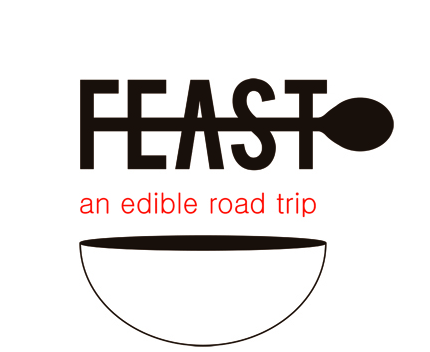How to Cheddar
Looking for a great way to spend a sunny day? Hop on your bike and cycle around Prince Edward County. The roads aren’t too busy, the hills are gradual, and you’ll really earn your cheese. Our first day in Prince Edward County was spent cycling to Black River Cheese Company, a farmer owned cheese collective; it’s been using milk exclusively from the County to make cheese since 1901.
Prince Edward County was known for its malting barley during the mid-late 1800’s. Trade barriers instituted by the US halted the barley biz and farmers needed to innovate in order to survive: dairy was the next undertaking. Since there was a growing demand for cheddar in England, the farmers of Prince Edward County began building a cheese industry to supply that demand.
The Black River Cheese Company’s beginnings are attributed to Mr. Hyke, who opened the small-scale cheese factory out of an old red barn (across the street from today’s location) with the help of a private investor in 1870. In 1901, a group of dairy workers increased the scale of production and moved the operation to a bigger facility across the road (where it still is) and started what is now the ‘Black River Cheese Company Ltd.’ This company was wholly owned by a group of farmers who saw the benefit in accumulating their efforts into one movement. Shares were sold to the farmers, and the cost of these shares even covered the expenses required to build a house for the cheese-maker, indicating a sincere value of the craft and skill needed to create a fine product.
Fast forward 112 years, and Black River Cheese is still farmer-owned, and still making cheese from County milk. They’ve expanded their operation, now making cheese in 6,000 L vats in several varieties, but they have maintained the human element. Many big cheese producers have turned to mechanized methods of making cheese, but at Black River Cheese, there is still a person supervising the process. Brad Reid is this cheese-maker, and he toured us around the facility, explaining the process of ‘cheddaring’ to us as we went.
The curds produced in the cheese-making process are cut into smaller pieces during the cheddaring process, expelling the excess whey. Once the whey is drained, the slabs are stacked again to release even more moisture.
This process is what distinguishes cheddar from other cheeses, and also what produces the crumbly texture in aged cheddars. Once the cheddaring process is done, the cheese is cut and the blocks go to designated areas of the cooler to be aged.
We sampled a variety of their aged cheddars, as well as their honey and maple versions. They’ve won the championship for their 3+ year old cheeses at the recent 2013 Canadian Cheese Grand Prix, and the maple cheddar was developed for the County’s annual Maple Syrup Festival; it has since become one of their most popular products. Our favourites were the three-year cheddar and the honey cheddar, a perfect balance of sharp and sweet.
We highly recommend a visit to this historic and successful cheese factory!
-DV
